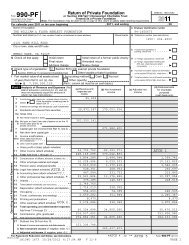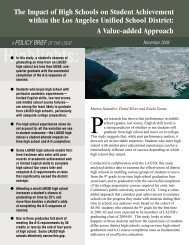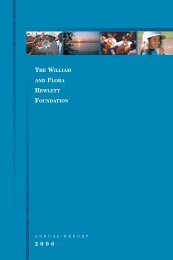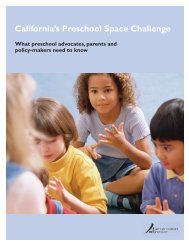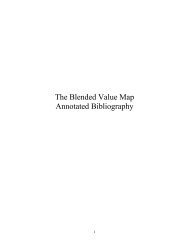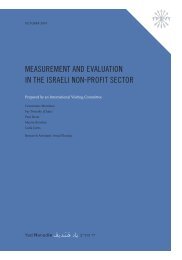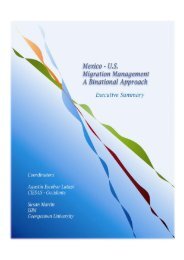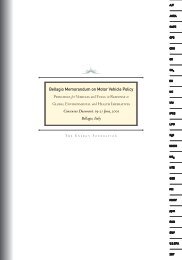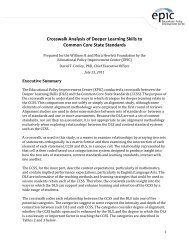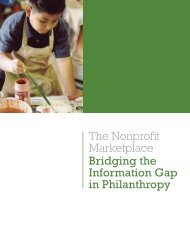EDUCATION FOR LIFE AND WORK - Hewlett Foundation
EDUCATION FOR LIFE AND WORK - Hewlett Foundation
EDUCATION FOR LIFE AND WORK - Hewlett Foundation
Create successful ePaper yourself
Turn your PDF publications into a flip-book with our unique Google optimized e-Paper software.
Education for Life and Work: Developing Transferable Knowledge and Skills in the 21st Century<br />
18 <strong>EDUCATION</strong> <strong>FOR</strong> <strong>LIFE</strong> <strong>AND</strong> <strong>WORK</strong><br />
programs and (e) exhibits, museums, and other informal learning centers.<br />
For learning in both formal and informal environments, identify<br />
features related to learning these skills in education interventions in (f)<br />
digital media.<br />
HOW THE COMMITTEE APPROACHED THE CHARGE<br />
To address these five areas of concern, the committee reviewed research<br />
literature across several disciplines, including cognitive science, educational<br />
and social psychology, economics, child and adolescent development, literacy,<br />
mathematics and science education, psychometrics, educational technology,<br />
and human resource development. The committee drew on recent<br />
NRC workshops focusing on demand for 21st century skills, the intersection<br />
of science education and 21st century skills, and the assessment of<br />
21st century skills, as well as on papers commissioned for an NRC planning<br />
process on behalf of the <strong>Hewlett</strong> <strong>Foundation</strong>. It considered the work<br />
of the ATC21S project and emerging research on the relationship between<br />
cognitive and noncognitive skills and abilities and adult outcomes (see<br />
Chapter 3).<br />
The committee met three times. The first meeting included an open<br />
session with representatives of the FrameWorks Institute, which focused on<br />
how the public thinks about education and early childhood development.<br />
In the closed session of the first meeting, teams of committee members<br />
focusing on each topic in the study charge delivered brief presentations<br />
summarizing relevant research findings. These presentations and discussions<br />
provided the basis for a preliminary draft of this report. At its second<br />
meeting, the committee deliberated on the preliminary draft and decided to<br />
focus the report on learning for transfer. Following the second meeting, the<br />
committee and staff revised the preliminary draft extensively, and this new<br />
draft was discussed at the committee’s third meeting. At the third meeting,<br />
the committee also developed preliminary conclusions and recommendations<br />
based on the draft. Following this meeting, the committee and staff<br />
again revised the report. In a final teleconference, the committee discussed<br />
and reached consensus on the conclusions and recommendations. The draft<br />
report entered the NRC review process in February 2012. Following receipt<br />
of review comments it was revised and publicly released in July 2012.<br />
ORGANIZATION OF THE REPORT<br />
Following this introductory chapter, Chapter 2 begins to address the<br />
question of how to define deeper learning and 21st century skills, proposing<br />
a preliminary taxonomy with clusters of competencies. Chapter<br />
3 summarizes several different strands of research on the importance of<br />
Copyright © National Academy of Sciences. All rights reserved.




